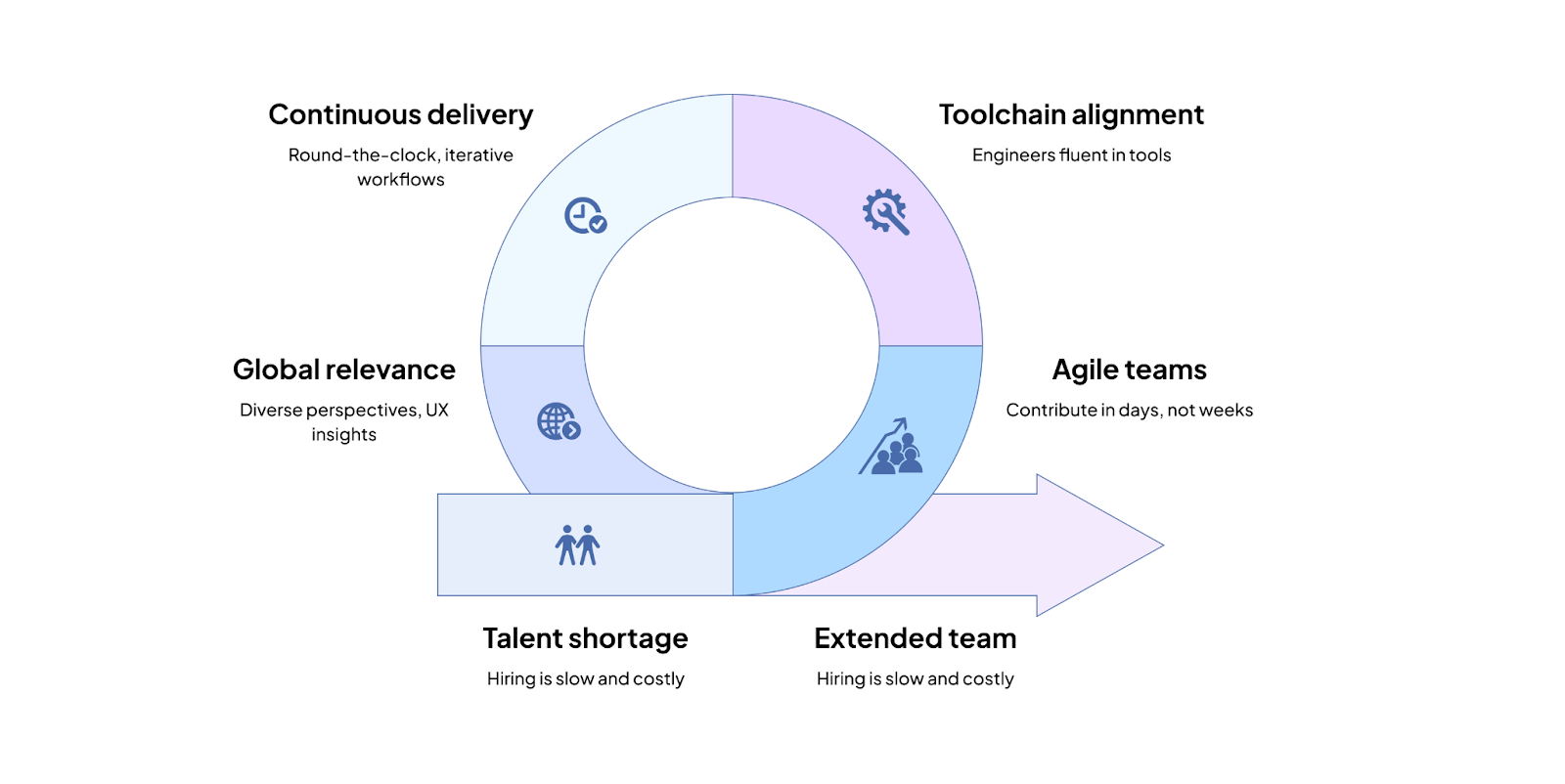For digital organisations, building fast, staying lean, and delivering reliably are now non-negotiable. Yet with engineering talent in short supply and delivery windows shrinking, traditional hiring approaches can no longer keep pace.
That’s why more CTOs are turning to offshore partnerships. Not as a fallback, but as a way to extend their in-house team and keep delivery on track.
Offshore teams with agile maturity, cloud fluency, and toolchain alignment contribute in days, not weeks, along with taking accountability and being coachable.
What is the value beyond cost
Local hiring cycles are lengthy, and onboarding adds further delays. Offshore delivery reduces that ramp-up by providing engineers already fluent in the tools, workflows, and delivery practices in use.
Whether you're rolling out a headless CMS, improving frontend performance, or adding LLM-powered features, offshore teams make it possible to plug in just the expertise you need, when you need it.
The real value is not in lower rates but in aligning capability to need, while time zone coverage enables continuous delivery.
Round-the-clock, iterative workflows help teams hit tight deadlines while enabling knowledge transfer that strengthens internal teams over time.
What makes integration the difference?
The difference between transactional outsourcing and meaningful offshoring lies in integration. Teams that are aligned with your systems, delivery goals, and culture deliver stronger outcomes. Shared purpose builds trust, collaboration, and ownership.
Offshoring also unlocks relevance in a global marketplace.
Diverse perspectives reveal language, UX, and regional insights that strengthen product-market fit. Forcing one side to over-accommodate the other rarely works.
Balanced teams learn from each other and evolve together, bringing together the most relevant people across geographies, skill sets, and perspectives to engineer systems that serve a global marketplace.

Conclusion
Offshoring is no longer just about cost efficiency. It’s a way for CTOs to bring in the right skills at the right time, keep projects moving across time zones, and reduce delivery risks. When offshore teams are fully integrated into systems and goals, they accelerate execution and strengthen in-house capabilities.
In my view, the biggest shift is that offshoring has become a business advantage. It gives organisations a way to deliver faster, adapt to demand, and stay competitive without being limited by local hiring cycles.

